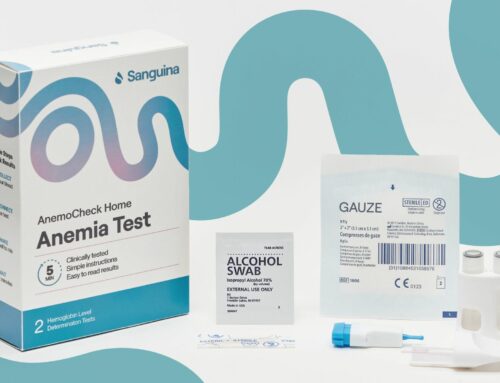By: Christopher Dunn, Senior Vice President of Business Development at ObservSMART|

Mainstream health advice has historically focused on the physical body. But in recent years, it’s becoming increasingly important to recognize how physical and mental health are linked — and how our healthcare system needs to provide optimal levels of patient care in treating both sets of conditions.
In fact, according to the Institute of Medicine, National Academy of Sciences, “As medical science and technology has advanced at a rapid pace, the health care delivery system has floundered in its ability to provide consistently high-quality care to all.”
While mental illness is prevalent across the world, the quality of care offered to mental health patients in today’s dominant healthcare model do not match the extent to which patients of physical afflictions are treated. There is a considerable treatment gap across the world — though statistics vary by regions — that needs to be recognized and corrected.
A Global Mental Health Crisis
In reporting on the growing public health concern about the care of those with mental and brain disorders, the World Health Organization (WHO), stated the following:
“Worldwide, community-based epidemiological studies have estimated rates of lifetime prevalence of mental disorders among adults ranging from 12.2% to 48.6% and 12-month prevalence rates ranging from 8.4% to 29.1% (1).
These rates do not include neurological conditions affecting the brain (1). WHO (2) has estimated that approximately 450 million individuals worldwide suffer from neuropsychiatric disorders in their lifetime.
The Cost of Untreated Mental Illness
The current mental health crisis does not discriminate by location, age, gender, or level of education. And it doesn’t only impact our communities medically and socially, it also poses a serious financial burden.
According to Project Hope, “The global economy loses about $1 trillion each year due to depression and anxiety. It’s estimated that mental health conditions could cost the economy as much as $16 trillion between 2011 and 2030.”
With one in four people experiencing mental health issues during their lifetime, the fact that two-thirds of them don’t receive the care they need is nothing short of extraordinarily alarming. There are many barriers to getting proper mental health treatment including access, resources, and the stigma associated with psychiatric disorders.
The real cost of untreated mental illness extends beyond the financials because the broader public health crisis is impacted. It’s clear that designing and adopting systematic quality improvement strategies are critical to attaining worldwide better mental health care.
Defining Quality of Care
If we want to improve the quality of care of mental healthcare for those affected, we need to understand quality of care. Defined by the Donabedian framework, quality of care is the organization of care that impacts clinical processes of care and drives patient-level health care outcomes.
This “system-process-outcome” model also explores quality of care in the context of seven key pillars: efficacy, effectiveness, optimality, acceptability, legitimacy, and equity. In combination, these provide a constructive framework for identifying the best strategic initiatives that would have the most positive impact on healthcare outcomes.
As patient safety advocates, we believe significantly improving quality of care in mental health facilities starts with measurement. In fact, we stand by the somewhat modernistic adage that you can’t improve something without measuring it.
Value-Based Healthcare
This approach to mental health treatment empowers health professionals to focus on the comprehensive health of a patient, including both physical and mental needs. Value-based healthcare (VBH) requires investing the time required to measure discrete medical illnesses throughout the entire cycle of care.
VBH is focused on using quality improvement (QI) to drive multiple developments, including achieving desired patient outcomes, reducing hospital costs, and attaining predictable results.
When treating a patient with anxiety, for example, their desired treatment outcome might be to wake up with happier thoughts or start a new hobby that they’ve put off. The healthcare intervention might include an initial assessment, five cognitive behavioral therapy (CBT) sessions, and 12 months on an antidepressant.
Ultimately, outcome measurement, or standardized outcomes, that are reported per mental health illness, are central to effectively improving quality of care and empowering better decisions on the part of all involved: behavioral healthcare patients, health professionals, and facilities.
Why Outcome Measurement is Important in Mental Healthcare
From the infantile stages of outcomes measurement in the early 1900s through an invigorated focus on performance improvement in the 1990s, quality measurement did not receive the interest and investment it rightfully deserved.
Not until the 21st century did measured outcomes introduce the value agenda, creating standard outcome measure sets shaping the quality measurement landscape across healthcare models.
In behavioral healthcare, the idea that outcomes should only be measured by changes in individual scores quickly became dangerously outdated. By not considering the interaction between mental health behaviors and symptoms, outcome measurement was rendered a less significant component of quality care improvements.
While measuring behavioral health outcomes has historically challenged the healthcare community, it’s more important than ever to conduct biological readings, gather
mental-health-related data (from emergency room visits, physician visits, and inpatient behavioral health data), and conduct diagnostic interviews.
By ensuring patient observations, patient activity measurement, charting patient progress, and measuring patient outcomes, the treatment process can benefit in the following way:
- Inform treatment plans and patient care
- Prioritize accountability on the part of the behavioral health patient care team
- Improve cumulative research that impact global mental healthcare quality improvement
Barriers to Outcome Measurement in Value-Based Healthcare
The primary goal for any healthcare provider must be to consistently provide unrivaled value for its patients. In delivering a high-value experience to any cohort of patients, value is defined formulaically as the desired patient outcomes divided by the actual costs associated with delivering them.
This analysis must also account for the mental health patient’s treatment throughout the lifecycle of care. So, what are the barriers to implementing value-based mental health care to achieve optimal outcome measurements?
- Fragmentation of care delivery by medical specialty
- Lack of validated activity and outcome measurement data
- Misrepresented cost measurements at the patient level
- Rewarding volume rather than value in utilizing fee-for-service payments
Prioritizing Quality of Care Improvement
With increasing psychiatric admissions across the country being met with lengthy ED boarding times, the importance of creating and maintaining a safe environment is a top priority for those in need of mental healthcare — and the behavioral healthcare professionals who deliver that care. This is the first step to better patient outcomes and value-based care.
 About The Author
About The Author
Christopher Dunn is the Senior Vice President of Business Development with ObservSMART, a pioneering patient safety and compliance solution that delivers a higher quality of care, while reducing risk, errors, and costs related to sentinel and non-sentinel events. For more information, visit http://www.observsmart.com.












